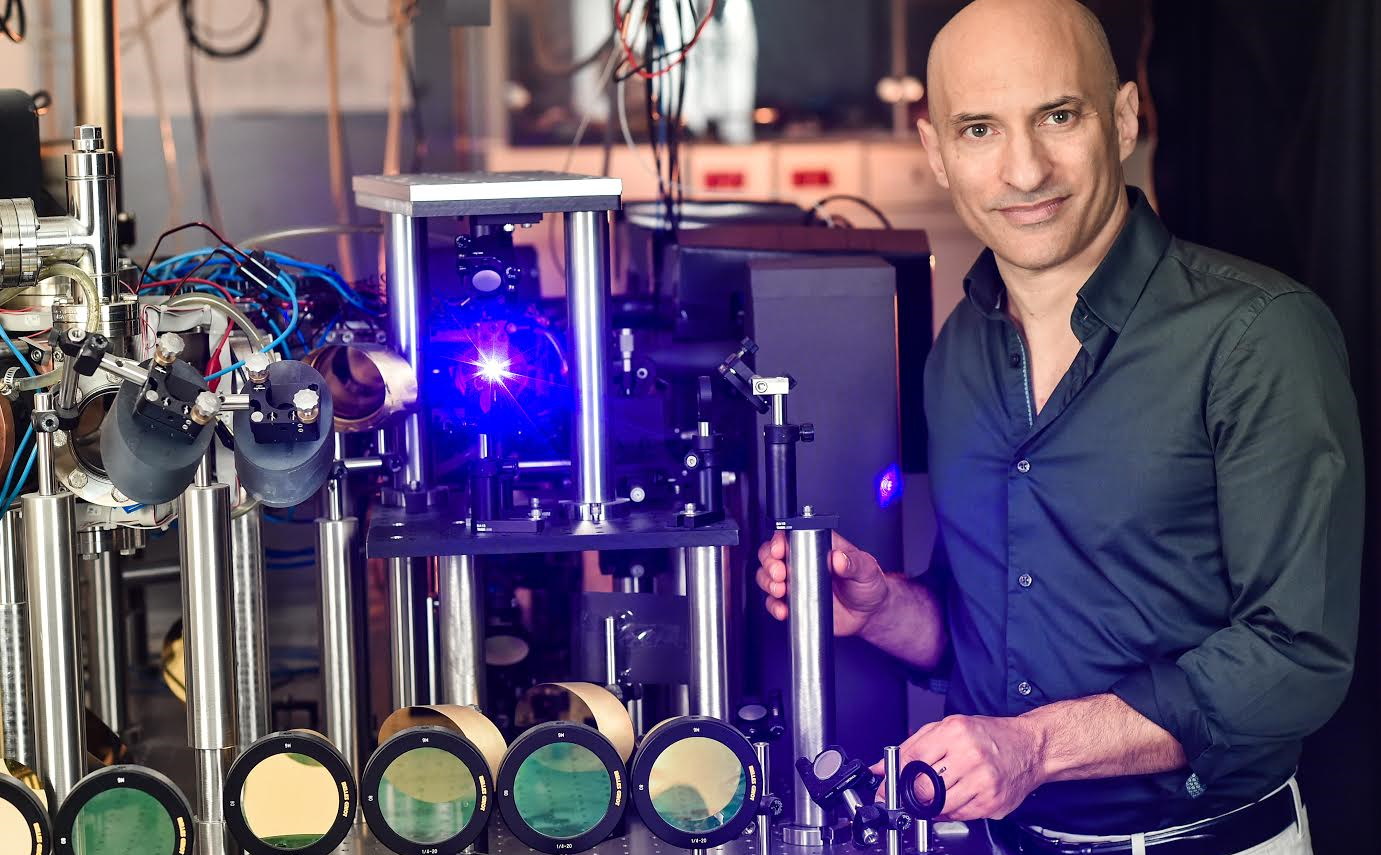
When eminent British physicist Stephen Hawking theorized, 42 years ago, that radiation emanates from black holes, no existing technology was powerful enough to prove it.
Now, Israeli professor Jeff Steinhauer can say definitively that “quantum Hawking radiation” is an actual phenomenon.
Steinhauer’s findings, published August 15 as the lead article in Nature Physics, describe the first observation of thermal, quantum Hawking radiation in any system.
“We observe a thermal distribution of Hawking radiation, stimulated by quantum vacuum fluctuations, emanating from an analogue [model] black hole,” said Steinhauer, head of the Atomic Physics Lab at the Technion-Israel institute of Technology in Haifa.
“This confirms Hawking’s prediction regarding black hole thermodynamics,” announced Steinhauer, winner of the Krill Prize in Physics in 2008.
Steinhauer has been working exclusively on the proof since 2009 in his hand-assembled lab, replete with lasers and dozens of mirrors, lenses and magnetic coils to simulate a black hole – defined as a place in space where gravity pulls so much that even light cannot get out.
Motivated by an overriding curiosity regarding the laws of physics since he was a child, Steinhauer says that evidence for the existence of quantum Hawking radiation brings us one step further in our understanding of the physical laws of the universe.
Here is what Steinhauer observed: Pairs of phonons (particles of sound) appear spontaneously in the void at the analogue black hole’s event horizon (“the point of no return” in space-time, beyond which events cannot affect an outside observer).
One of the phonons travels away from the black hole as Hawking radiation, and the other partner phonon falls into the black hole. The pairs have a broad spectrum of energies, and the correlations between these pairs allow for the detection of the Hawking radiation.
Entangled
Using a unique technique performed in a Bose-Einstein condensate (a quantum state of matter where a clump of super-cold atoms behaves like a single atom), Steinhauer could see that the Hawking and partner particles within any high-energy pair (but not low-energy pair) have a quantum connection called “entanglement.”
Steinhauer explained: “This entanglement verifies an important element in the discussion of the information paradox (the idea that information that falls into a black hole is destroyed or lost) as well as the firewall controversy (the theory that a wall of fire – resulting from the breaking of the entanglement between the Hawking particles and their partners – exists at the event horizon of a black hole).”
The observation of entanglement verifies important elements in the discussion of information loss in a real black hole.
Through the Wormhole, a Science Channel TV show hosted and narrated by Academy Award winner Morgan Freeman, featured Steinhauer back in 2012. Here, he discussed his creation of an analogue black hole in the lab and his hopes of using it to observe Hawking radiation. The analogue black hole takes advantage of his pioneering ultra-high resolution imaging system.
In 2014, Steinhauer succeeded in doing this, publishing his results in a top science journal of the first observation of Hawking radiation in any system.
This earlier work demonstrated “self-amplifying Hawking radiation,” which reflected from the inner horizon, returned to the outer horizon, and caused additional Hawking radiation. Steinhauer’s latest research endorses the existence of quantum Hawking radiation, the spontaneous appearance of Hawking pairs.

















